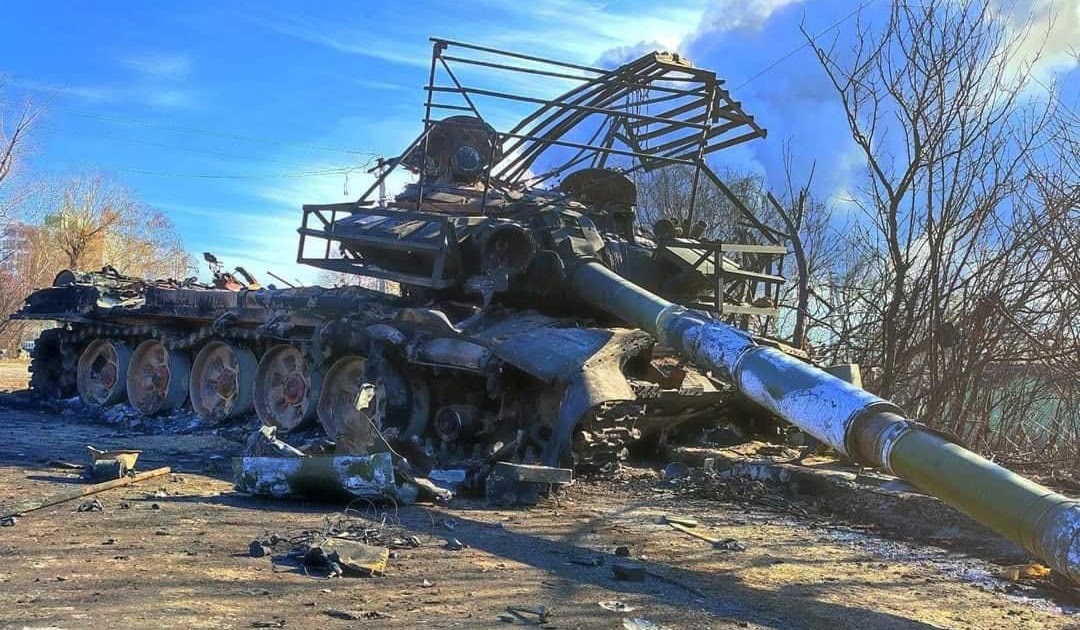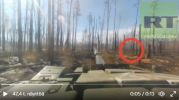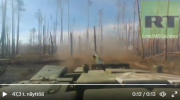"What does a 10 tons weight difference mean in a tank?"

 www.tu.no
www.tu.no
What does ten tons on a tank mean? It depends on which general you ask.
On Friday 3 February, the government announced that it is acquiring 54 new Leopard 2A7 tanks from Krauss-Maffei Wegmann.
This happened after a competition with two invited participants in which the German supplier was preferred over Korean Hyundai Rotem and their K2 Black Panther tank.
As Teknisk Ukeblad has mentioned , the decision was taken despite the fact that Defense Materials recommended the Korean candidate, which, among other things, should have been considerably less expensive.
Teknisk Ukeblad has only been given access to redacted copies of Defense Material's recommendations to the Defense Staff. It is still possible to reason that, in addition to price, the question of weight is something that is weighted relatively heavily. The passage on this topic forms a significant part of the graded discussions.
Both tanks have diesel engines producing 1,500 horsepower, while the weight difference is around ten tonnes. Then the question is what the difference in the weight/power ratio has to say practically and operationally.
Teknisk Ukeblad has spoken to former defense chief Harald Sunde, who believes this has marginal significance, while former army chief Lars J. Sølvberg, on the other hand, believes it has obvious consequences.
Equaly good
First, it must be emphasized that Forsvarsmaterel's review concluded that both tanks met the requirements and that the overall assessment of performance indicates that they are roughly equally good.
In the FMA documents, it appears that the Leopard 2A7 weighs just under 70 tonnes, while the K2 Black Panther weighs just under 60 tonnes.
"I think the weight issue is interesting, as I understood that it was a requirement from Defense Material to stay below 60 tonnes and I know that Hyundai Rotem made many moves to succeed in this, despite the fact that they switched on APS (active protection) . From experience, this weight difference will have major consequences for both logistics and mobility," says Sølvberg.
He is a retired major general and former commander of the Army and has been associated with the Korean campaign based on what he says is a genuine interest in the Armed Forces getting a good solution to something that has been hanging in the air for many years. In other words, modern tanks to replace the around 40-year-old Leopard 2A4s that were bought used over 20 years ago.
When it comes to the logistics part, he says that the Norwegian Armed Forces are already in borderland on a number of roads and bridges when the Leo 2A4 is transported around, and that the problem could become greater with new tanks in combination with new cargo vehicles from RMMV, which increase the total weight .
It is also a strategic point. He believes it is important not to put the Army in an unfavorable position where they are only referred to isolated training fields. Being able to practice throughout the country and be visible in your training maneuvers also has a deterrent effect.
Caption: Defense material spends quite a lot of time discussing the weight issue in its tank recommendations. Photo: Facsimile
Less need for steel
Sølvberg further points out that weight is a very important component in the mobility dimension.
"This was also a theme in the days of the Leopard 1. I remember the Americans visiting Norway with considerably heavier M60 tanks, and there was a dramatic difference in the ability to navigate the terrain. There is a lot of bog in Norway. And anyone who has been stuck there with a tank knows that then it is quickly done to stay put for good," says Sølvberg.
Sølvberg rejects that lower weight means less protection and refers to information TU has also received from Hyundai Rotem:
They say that the main reason why K2 weighs less is less need for steel. Many tons are saved in a tower that is smaller because the charger is replaced by an auto charger and the crew consists of three instead of four. The modern "power pack" (engine and transmission) is more compact and lighter, while the wheel suspension also saves weight.
"The height profile, being able to lower down and reduce one's own silhouette, can also be of great importance for survivability," points out Sølvberg.
The K2 is equipped with a hydropneumatic suspension solution that can be somewhat reminiscent of what you find on passenger cars from Citroën. This means that the ground clearance can be regulated from 0.55 to 0.15 meters (0.45 is standard).
Raising the front slightly in relation to the rear helps to increase passability on snow. The adaptive chassis also makes it possible to raise the cannon from minus 10 to plus 24 degrees by kneeling or sitting on the hind legs.
Sølvberg compares the tanks as a 2000s digital construction, in contrast to analogue steel from the 1970s.
"It's future versus past, a Hyundai Ioniq versus an Opel Rekord. The development potential is vastly greater for K2 than Leo, as well as the fact that K2, for example, has a built-in simulator and digital maintenance management for better and cheaper support services. But by all means, I have a lot of good things to say about Leo. After many years of service with two generations of Leopard, I know that they were excellent systems - for their time. But I had hoped that the Army would now take a solid place going forward," says the former army commander.
Somewhat exaggerated
Someone who also has a lot of good things to say about Leo, both its past and future, is retired general Harald Sunde. Just a few weeks after Russia invaded Ukraine, the former defense chief told Teknisk Ukeblad that he considered it a matter of course that Norway acquired new tanks from Germany .
He primarily argued the importance of continuing to use the same material as our close allies and ensuring that we can also fight together in one group in the future and have systems with interoperability.
He does the same today, and emphasizes that the advantages of large households must be exploited to the utmost and that shared logistics solutions must be further developed.
Leopard 2 is used today in various versions by all the Nordic countries, as well as Germany, the Netherlands, Poland, Hungary, Poland, Turkey, Greece, Austria, Switzerland, Spain, Portugal, Canada - as well as Ukraine.
"I think a good choice has been made here, albeit in overtime. The Norwegian army, like other NATO countries, has chosen the maneuver concept as a form of combat, and it requires storm armored vehicles and tanks that fight as one unit. We have modern armored personnel carriers in upgraded CV90s, but we have lacked modern tanks," says Sunde.
"I think that the weight issue is somewhat exaggerated. We have a lot of hills, mountains and solid ground, so that the carrying capacity of heavy vehicles in this country is not an obstacle. Restrictions on roads and such, I would call a peace problem. We have a lot of hilly terrain, but in return it gives large fields of fire and the opportunity to utilize the tanks' great strength - flat-track fire at 3-4,000 metres," says Sunde.
Not either/or
54 Leopard 2A7s are to be acquired from KMW. This means that the Army is continuing a 53-year-long tradition in which they have used the Leopard 1A5 and now, most recently, the Leopard 2A4.
The main delivery from the Munich-based company is scheduled to take place in the period 2026–2028. The contract includes an option for a further 18 tanks.
Sunde has no doubt that this option should be used and says he is looking forward to the Chief of Defense's new professional military council. As is known, the acquisition of tanks on the eve of the process was surprisingly postponed when it became known that the chief of defense recommended dropping tank purchases.
"I want to defend Kristoffersen a little, because I know what it's like to be underfunded. Then such powerful remarks are needed. But I would say that the discussion about maneuverability and long-range fire cannot be either/or. Long-range fire is a casualty, and it is the effect that matters most, not whether it is delivered by rockets, artillery shells or air-to-ground operations. But to conquer and hold ground, maneuver is needed," says Sunde, who was chief of defense in the period 2009–2013.
German configuration
Krauss-Maffei Wegmann (KMW) informed Teknisk Ukeblad at the end of January last year, when the winter tests at Rena were about to start, that their Leopard 2A7 weighed 64 tons.
In Forsvarsmateriel's mapping, it appears that the tank weighs close to 70 tonnes.
Teknisk Ukeblad has asked KMW what is the reason for this difference, and has received the answer that it was the Leopard 2A7 in German configuration that was used in the winter tests, and that information about the current Norwegian configuration belongs to FMA.
Among the things that increase the emphasis is active protection (APS), something that, by the way, both candidates offered.
Hyundai Rotem still does not want to comment on the Norwegian tank competition. Their representative Mogens Rasmus Mogensen in Military Equipment Denmark (MED) has stated to TU that they were very satisfied with the way FMA conducted the competition and with the whole process, until the matter ended up at a political level and someone high up in the system thought it was most important that Norway buys material from Germany.
As for the difference in weight between Leo 2A7 and K2, Sunde says that this is of marginal importance, especially now that we are talking about the defense of Norway and the soil we have here.

Hva betyr ti tonn fra eller til på ei stridsvogn? To pensjonerte generaler er rykende uenige
Det kommer an på hvilken general du spør.










